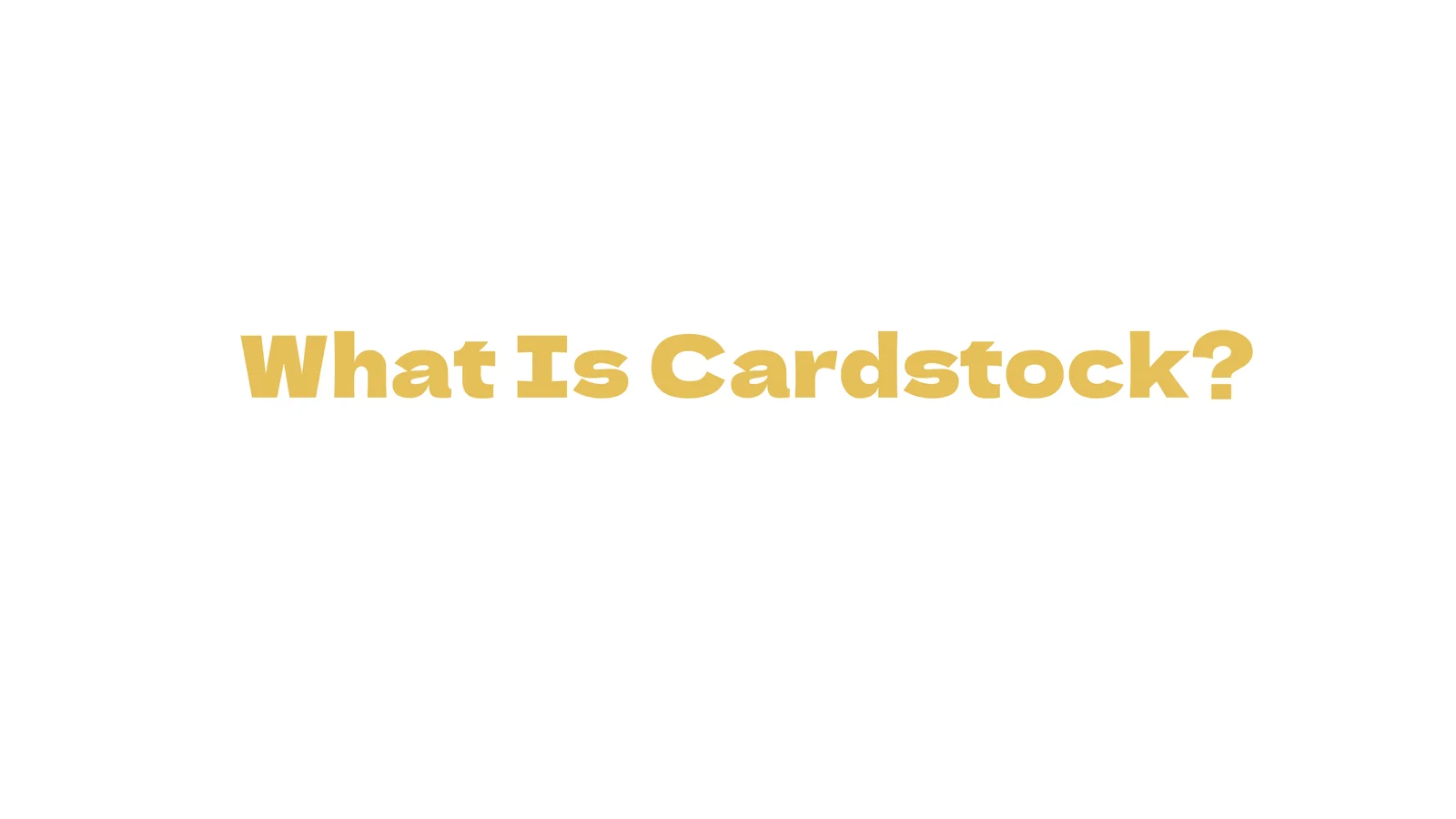Cardstock is a thick, strong type of paper. It’s thicker than normal paper but thinner than cardboard. You’ve probably seen it used for things like greeting cards, postcards, or crafts. It serves as a middle ground between standard paper and heavier materials, making it ideal for a variety of applications that require sturdiness without sacrificing flexibility. People often confuse cardstock and coverstock, and while they are very similar, there are small differences between them:
Cardstock
-
A general-purpose thick paper.
-
Comes in different weights, finishes, and colors.
-
Used for crafts, invitations, greeting cards, and more.
-
Can have a smooth, matte, glossy, or textured surface.
-
Very versatile for both writing and printing.
Coverstock
-
A type of cardstock, but usually with a more decorative or glossy finish.
-
Designed to be eye-catching and more durable.
-
Often used for:
-
Book covers
-
Presentation folders
-
Professional brochures
-
Usually heavier and smoother than standard cardstock.
What Is Cardstock Paper Used For?
Cardstock paper is known for its strength, smooth finish, and versatility. As the demand for cardstock its uses are expanding across many industries. Thanks to its strong and high-quality properties, cardstock is an excellent choice for both personal and professional projects. Some common uses include:
-
Craft projects and DIY art
-
Card making, such as greeting cards or thank-you cards
-
Restaurant menus that need to look good and last longer
-
Invitations for weddings, birthdays, or events
-
Brochures and flyers for marketing
-
Product packaging and labels
Manufacturing Process Of Cardstock
Cardstock is made through several steps using special machines. Packaging companies take care to make high-quality cardstock that is strong and smooth. Here are the main steps:
1. Choosing Raw Materials
-
Cardstock starts with wood pulp, recycled paper, or cotton.
-
Extra ingredients are added to make the paper stronger and smoother.
2. Making Pulp
-
The raw materials are turned into a soft, wet mix called pulp.
-
This mix is cleaned and sometimes bleached to make white cardstock.
3. Refining the Pulp
-
The pulp is beaten and refined to improve its quality and help the fibers stick together better.
4. Forming the Paper
-
The pulp is spread out on a big screen to form a thin sheet.
-
Water drains out, and the paper starts to take shape.
5. Pressing and Drying
-
The wet sheet goes through rollers to squeeze out more water.
-
Then it passes through heated dryers to remove moisture completely.
6. Coating (Optional)
-
Some cardstock is coated to make it shiny, smooth, or better for printing.
7. Finishing
-
The cardstock is cut into sheets.
-
If needed, it’s shaped using die-cutting machines to make boxes or cards.
8. Quality Check
-
The cardstock is tested to make sure it’s thick, strong, and looks good.
9. Packaging
-
Finally, it’s packed and sent to customers like printers or packaging companies.
Types Of Cardstocks
1. By Weight/Thickness
| Type | Description |
|---|---|
| Lightweight (50–80 lb) | Thinner, similar to regular paper; used for flyers or basic projects. |
| Medium-weight (90–110 lb) | Common for greeting cards and brochures. |
| Heavyweight (120–160+ lb) | Very thick; used for covers, invitations, packaging. |
2. By Finish/Texture
| Type | Description |
|---|---|
| Smooth | Flat and clean surface; ideal for printing. |
| Glossy | Shiny finish; good for photos or brochures. |
| Matte | No shine; has a soft, elegant look. |
| Textured (linen, canvas, etc.) | Has a fabric-like or rough texture; used for fancy invitations. |
| Vellum | Slightly rough, semi-transparent feel. |
| Metallic | Shimmery and reflective surface. |
3. By Use or Specialty
| Type | Best For |
|---|---|
| Printable Cardstock | Works well with inkjet or laser printers. |
| Colored Cardstock | Comes in many colors; used in crafts and decoration. |
| Patterned Cardstock | Has printed designs; great for scrapbooking. |
| Kraft Cardstock | Brown and recycled-looking; popular for eco-friendly packaging. |
| Glitter Cardstock | Sparkly; often used in party decorations. |
| Adhesive Cardstock | Has a sticky back, like a sticker. |
What Is Cardstock Paper Weight?
Cardstock paper weight refers to how thick and heavy the paper is. It helps you understand how sturdy the cardstock will be compared to regular paper.
Common Cardstock Weights
| Pounds (lb) | GSM (approx.) | Use Case |
|---|---|---|
| 65 lb | 175 GSM | Light crafts, layering |
| 80 lb | 215 GSM | Greeting cards, flyers |
| 100 lb | 270 GSM | Invitations, folders |
| 110–130 lb | 300–350 GSM | Business cards, covers, packaging |
Manufacturing Process Of Cardstock
Cardstock is made through several steps using special machines. Packaging companies take care to make high-quality cardstock that is strong and smooth. Here are the main steps:
1. Choosing Raw Materials
-
Cardstock starts with wood pulp, recycled paper, or cotton.
-
Extra ingredients are added to make the paper stronger and smoother.
2. Making Pulp
-
The raw materials are turned into a soft, wet mix called pulp.
-
This mix is cleaned and sometimes bleached to make white cardstock.
3. Refining the Pulp
-
The pulp is beaten and refined to improve its quality and help the fibers stick together better.
4. Forming the Paper
-
The pulp is spread out on a big screen to form a thin sheet.
-
Water drains out, and the paper starts to take shape.
5. Pressing and Drying
-
The wet sheet goes through rollers to squeeze out more water.
-
Then it passes through heated dryers to remove moisture completely.
6. Coating (Optional)
-
Some cardstock is coated to make it shiny, smooth, or better for printing.
7. Finishing
-
The cardstock is cut into sheets.
-
If needed, it’s shaped using die-cutting machines to make boxes or cards.
8. Quality Check
-
The cardstock is tested to make sure it’s thick, strong, and looks good.
9. Packaging
-
Finally, it’s packed and sent to customers like printers or packaging companies.

